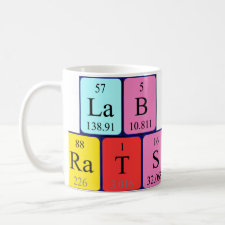
Authors: Alizadeh T, Atayi K
Article Title: Synthesis of hydrogen phosphate anion-imprinted polymer via emulsion polymerization and its use as the recognition element of graphene/graphite paste potentiometric electrode.
Publication date: 2018
Journal: Materials Chemistry and Physics
Volume: 209
Page numbers: 180-187.
DOI: 10.1016/j.matchemphys.2018.01.068
Alternative URL: http://www.sciencedirect.com/science/article/pii/S0254058418300683
Abstract: Hydrogen phosphate imprinted polymer was prepared via emulsion polymerization. An oil in water emulsion, stabilized with cetyltrimethylammonium bromide molecules, was used as the polymerization media. Acrylic acid and divinyl benzene, dissolved in chloroform, were used as the functional monomer and cross-linker agent, respectively. hydrogene phosphate anion species, fixed via adjusting the pH of the synthesis environment, was used as the template in the imprinting process. The imprinted polymer obtained was used as the recognition element of a potentiometric sensor, prepared by mixing of graphite, imprinted polymer, graphene and n-eicosane. The electrode incorporated with the imprinted polymer showed a Nernstian response to hydrogen phosphate concentration; whereas, the non-imprinted based electrode had no sensitivity to hydrogen phosphate anions. It was also demonstrated that the presence of graphene material in the electrode composition improved the electrode efficiency in responding to target ion. The imprinted polymer/graphene modified electrode, showed a dynamic linear range of 1 x 10-5 - 1 x 10-1 mol L-1, Nernstian slope of 29.8 ± (0.4) mV decade-1, response time of 10 s and detection limit of 5.0 x 10-6 mol L-1. The utility of the electrodes was checked by determination of phosphate ion in some real samples
Template and target information: hydrogen phosphate anion, phosphate
Author keywords: Anion-imprinted polymer, Graphene, hydrogen phosphate, ion selective, Carbon paste



Join the Society for Molecular Imprinting

New items RSS feed
Sign-up for e-mail updates:
Choose between receiving an occasional newsletter or more frequent e-mail alerts.
Click here to go to the sign-up page.
Is your name elemental or peptidic? Enter your name and find out by clicking either of the buttons below!
Other products you may like:
 MIPdatabase
MIPdatabase









